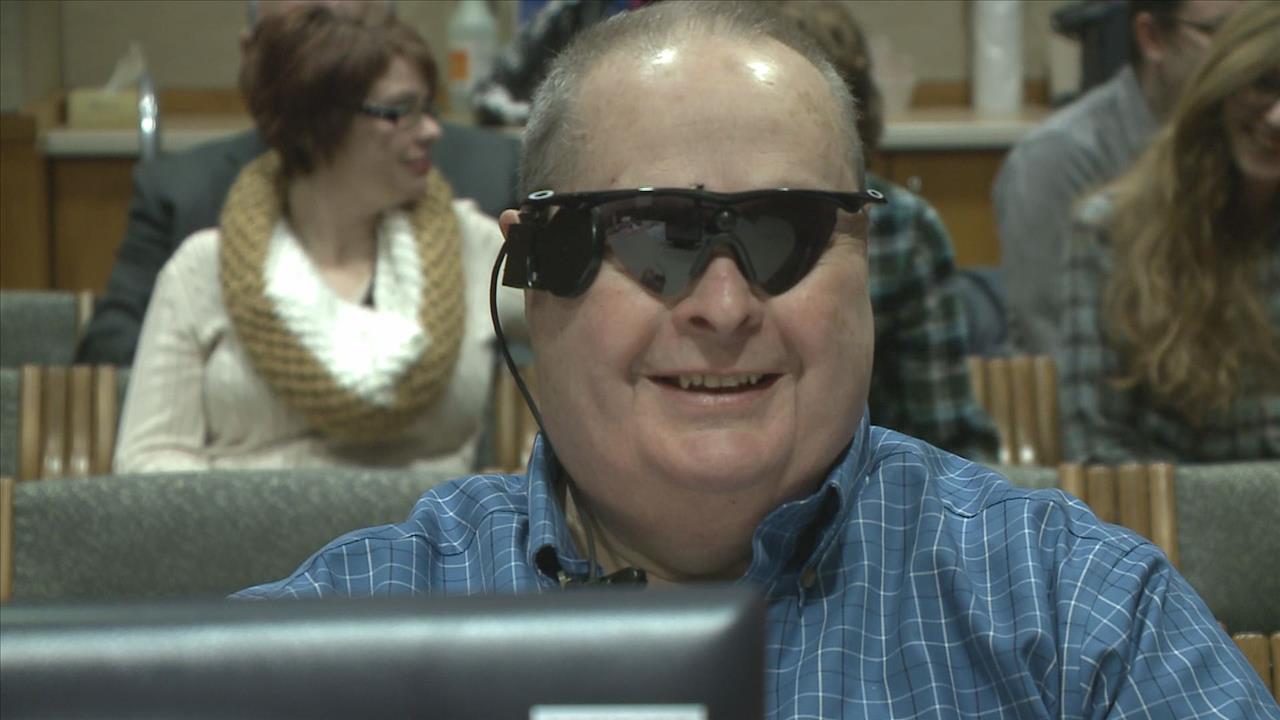ROCHESTER, Minn. – A blind Forest Lake man's sight is restored after he became the first person in Minnesota, and 15th person in the country, to receive a bionic eye.
Allen
"Yeah,"
He then could find no more words, embracing her.
"It's crude, but it's significant. It works," he rejoiced, through tears.
His wife, Carmen
"Ten years?" she asks.
"Ten years, but I still kiss her with my eyes closed," laughed
The grandfather
"I have a lot of fun with my grandkids and family. I think it would be good to recognize when they come in the room, and observe their growing and things like that. My grandkids in Oregon love playing hide and seek – they don't have to hide anywhere except for a corner of a room,"
Humor is part of how Zderadcopes, and his curious optimism is the reason by Dr. Raymond Iezzi, a Mayo Clinic retinal surgeon and clinical ophthalmologist, chose
"The retinal prosthesis implant has taken over 25 years to develop. Hundreds of millions of dollars and hundreds of people to bring this forward to this point," said Dr. Iezzi.
Dr. Iezzi hands
"Awesome," he said. "Is it okay if I touch?"
After several pre-op tests measuring how much light and movement
The next morning, it takes three hours in the operating
"It's a bionic eye – in every sense of the word. It's not a replacement for the eyeball, but it works with interacting with the eye, explained Dr. Iezzi. "Mankind has been seeking to cure blindness for 2,000 years or more, but only in the past quarter of a century have we had the electronics and the packaging and all the other things come together to build a retinal prosthesis that could restore sight to the blind."
Two weeks later, comes a moment
"I'm pins and needles – or on electrodes I should say," said
His children and grandchildren are already moved by
The camera in
"It's the flash and I've got to be able to interpret the changes in that shape," he exclaims.
The scenes look like a scoreboard, with pixels creating
"His whole life we have heard – nothing can be done, nothing can be done, it's all we've heard, until now," said Carmen
The moment is perhaps most meaningful to his 13-year-old grandson, Caleb Sorenson, of Lake City. He also inherited RP.
"I knew I was a carrier and we always knew if we had a son he should have a 50-50 chance and we always hoped he wouldn't be that 50," said Mara Sorenson,
Caleb now has greater hope for his inherited disease.
"He can succeed," said Zderad, of his grandson. "He's defined not by his limitations but by the ability God has given him...so…I hope he appreciates that."
Caleb is also Dr. Iezzi' s patient at the Mayo Clinic program for people with RP, and through that relationship, Dr. Iezzi asked to meet
"He can succeed," said Zderad, of his grandson. "He's defined not by his limitations but by the ability God has given him...so…I hope he appreciates that."
So for his grandson,
"I think if there is anyone that could show the world how effectively this technology works,
Dr. Iezzi is already planning on implanting the device in a second patient, while researching future uses for patients who have other eye conditions besides retinitis pigmentosa, like patients with glaucoma, or soldiers who may have lost their eyes in combat.
"I'm glad I have the energy and stamina to put in the time and effort, I'm really excited. God has given me the strength at 68 years of age to still keep going, this is great," said
To Zderad, vision is more than sight, and more than modern technology. He walks straight towards his wife and kisses her smack dab on the lips.
"Whoa, I can see with my eyes closed!" he laughs, one more time.
Zderad is the 101st person in the world to receive the Second Sight Argus II Retinal Prosthesis System. He soon plans to see a movie, travel, and of course, spend time with all his grandchildren.


